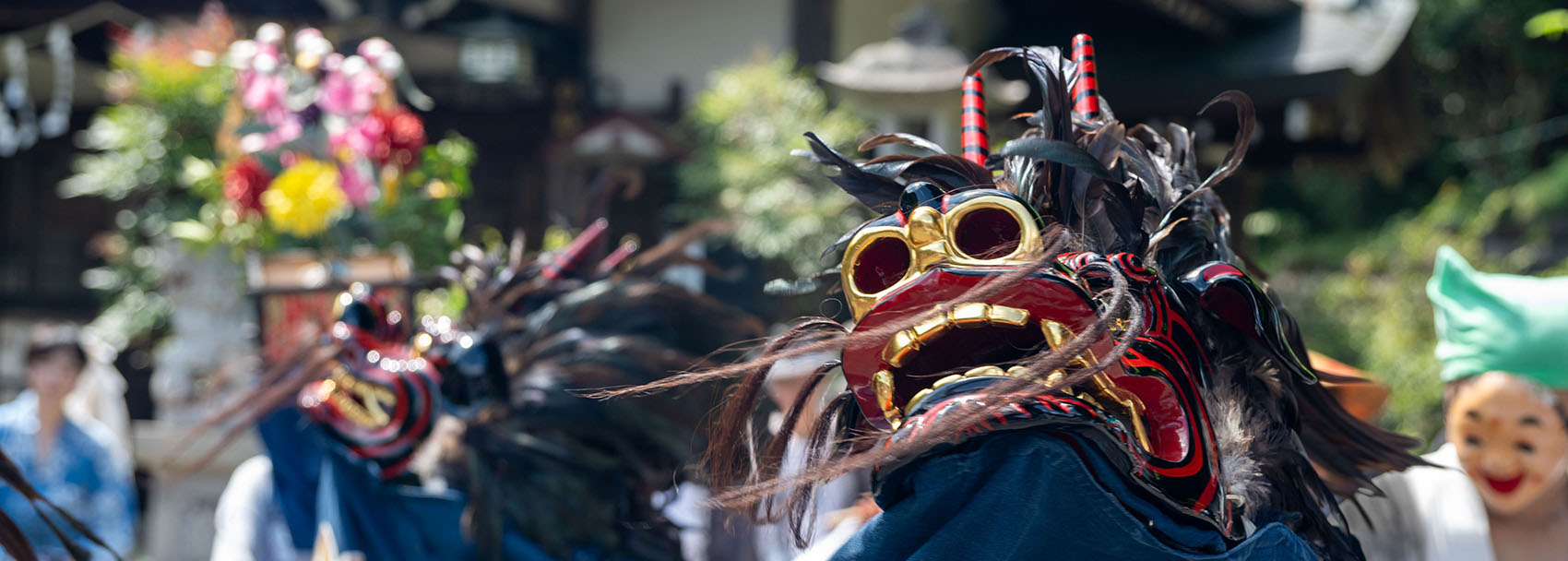




The Imakuma Lion Dance Heritage Society - Official site
Every role matters, so please feel free to join us!

↑↑ Click ↑↑




This is a traditional Lion Dance performed by three lions, passed down through generations at Imakuma Shrine, located at the foot of Mount Imakuma in Hachioji. It is said to have originated in 1364, when Juen, a monk and administrator of Shofuku-ji Temple, taught the dance to the villagers.
The lions of Imakuma perform dynamic movements—crouching low and leaping high. To avoid hindering these vigorous motions, the dancers wear small drums strapped around their lower abdomen rather than on their chest.Each year, on the last Sunday of August, the dance is offered at both Shofuku-ji Temple and Imakuma Shrine within the community.
In Imakuma, performing the lion dance is also referred to as “kuruu,” a word meaning “to go mad.” This expresses the idea that the spirit of the lion possesses the dancer, causing them to lose their human consciousness and enter a trance-like state.

↑↑ Click ↑↑
The dedicatory dance follows the story described above.
We invite you to read and experience the tale behind it.
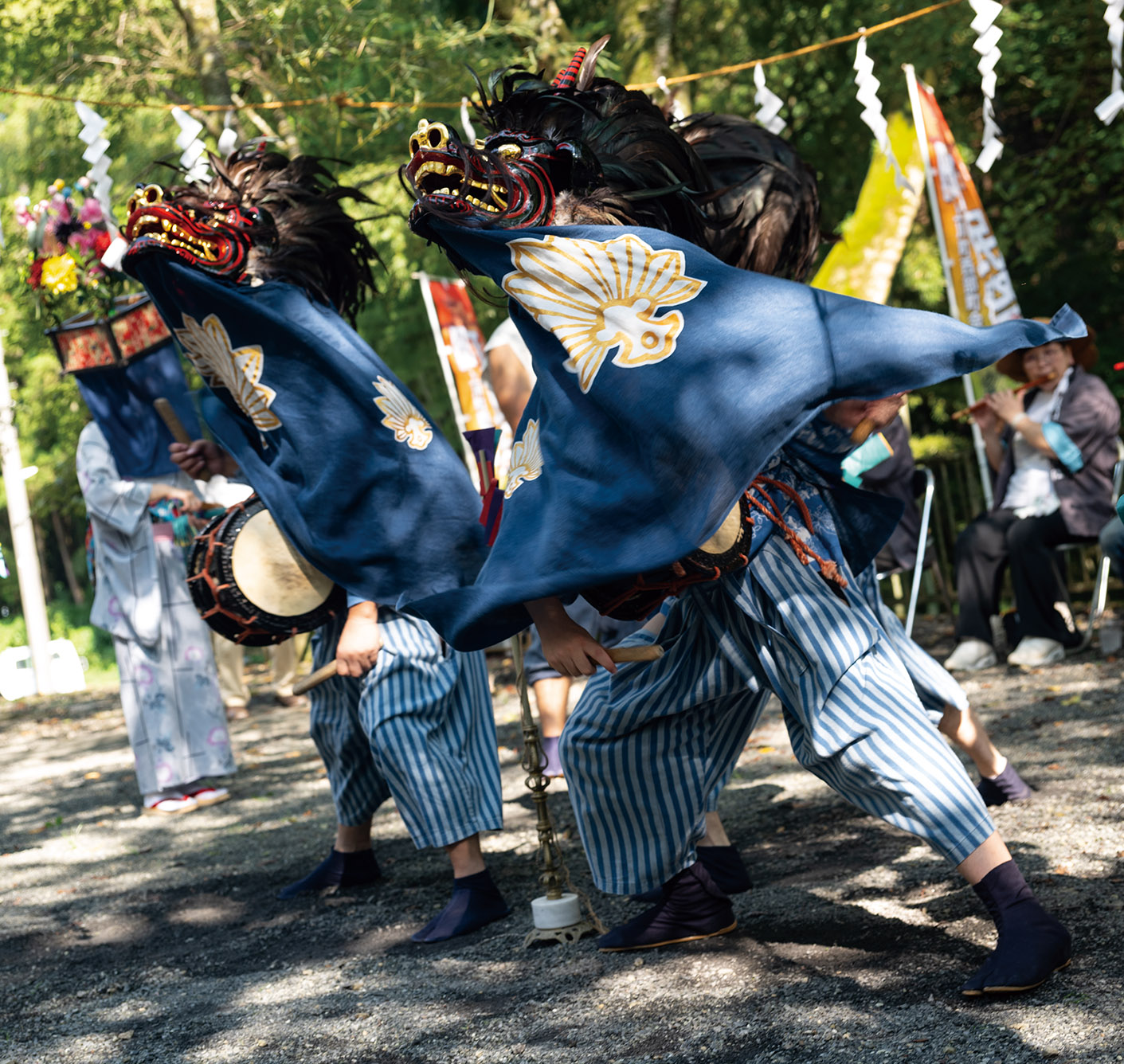
The lion dance offering is performed in three acts: Shote-niwa, Naka-niwa, and Shimai-niwa.
Each act varies in difficulty, with Shote-niwa (the Opening Act) designed for intermediate performers, Naka-niwa (the Middle Act) for beginners, and Shimai-niwa (the Final Act) for experts. The performance requires a total of nine dancers, with three dancers assigned to each act.
In the Naka-niwa (Middle Act), dancers of all ages, including children, adults, and occasionally women, participate.
In the Shote-niwa (Opening Act), the dancers must perform at several different locations, such as at Shofuku-ji Temple and Imakuma Shrine. This involves physically demanding tasks, including walking between the temple and the shrine. The dancers also take on the important role of preparing the stage for the next act, which is known as the “Heisoku-tori” (the act of retrieving the sacred paper bundle). This is a crucial moment in setting the tone for the performance.
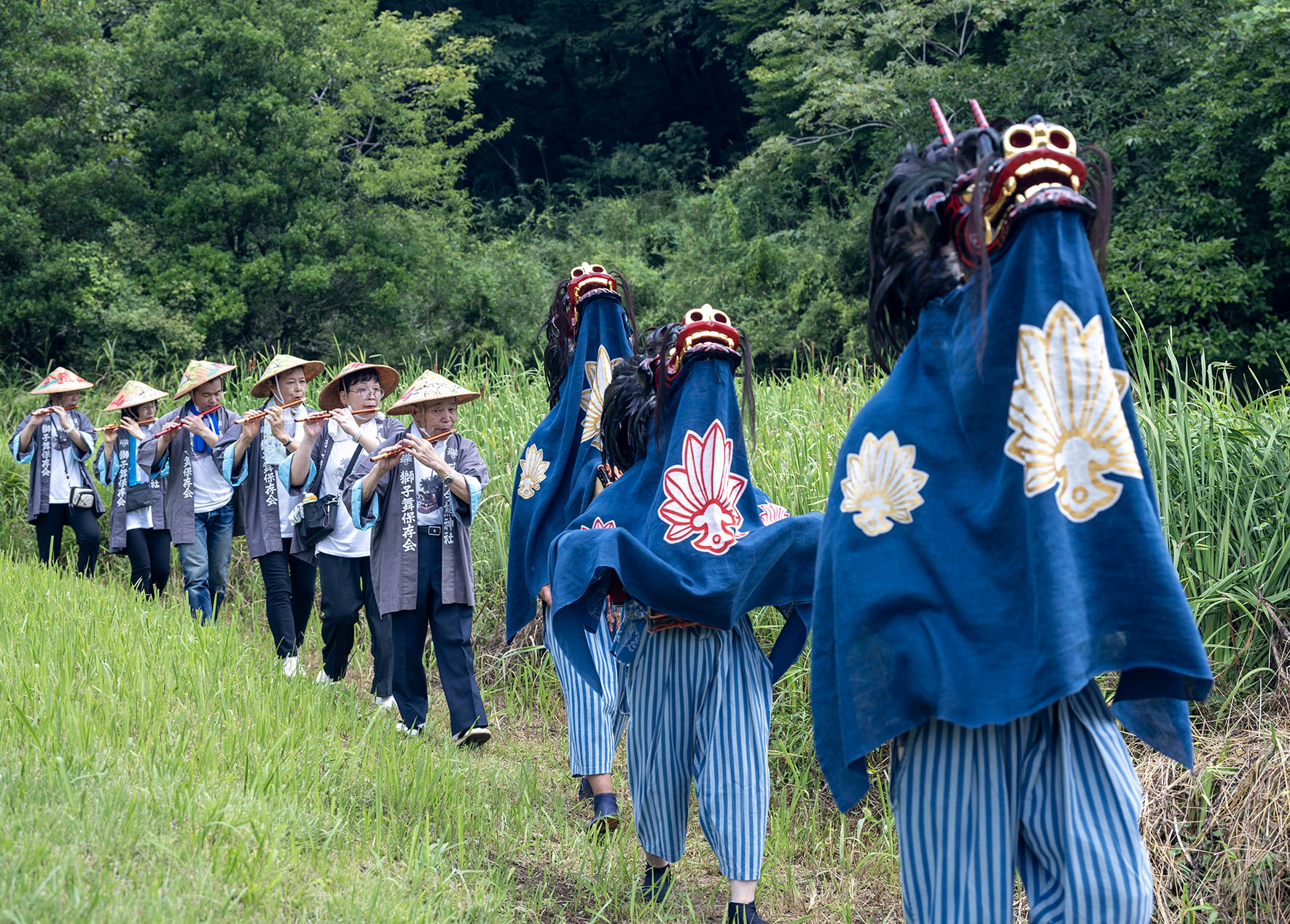

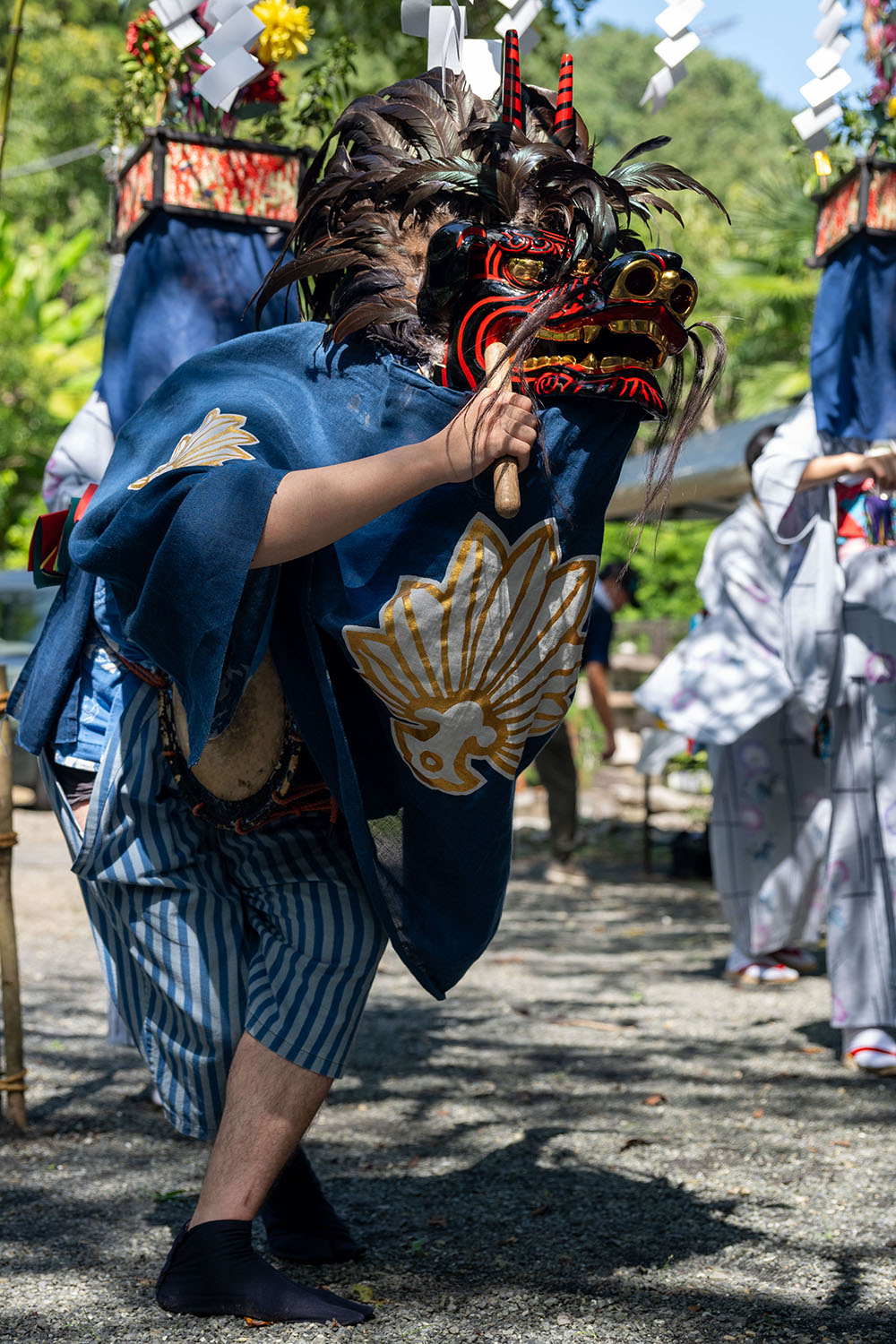

In the Naka-niwa (Middle Act), beginners and children typically start their training. However, this act is by no means easy. The “Hitotsugaeri” (Single Flip) and “Futatsugaeri” (Double Flip) are performed exclusively in the Naka-niwa and feature dynamic movements, such as spinning and jumping high into the air. Depending on the composition of the performers, there may be two sets of dancers appearing at the same time.
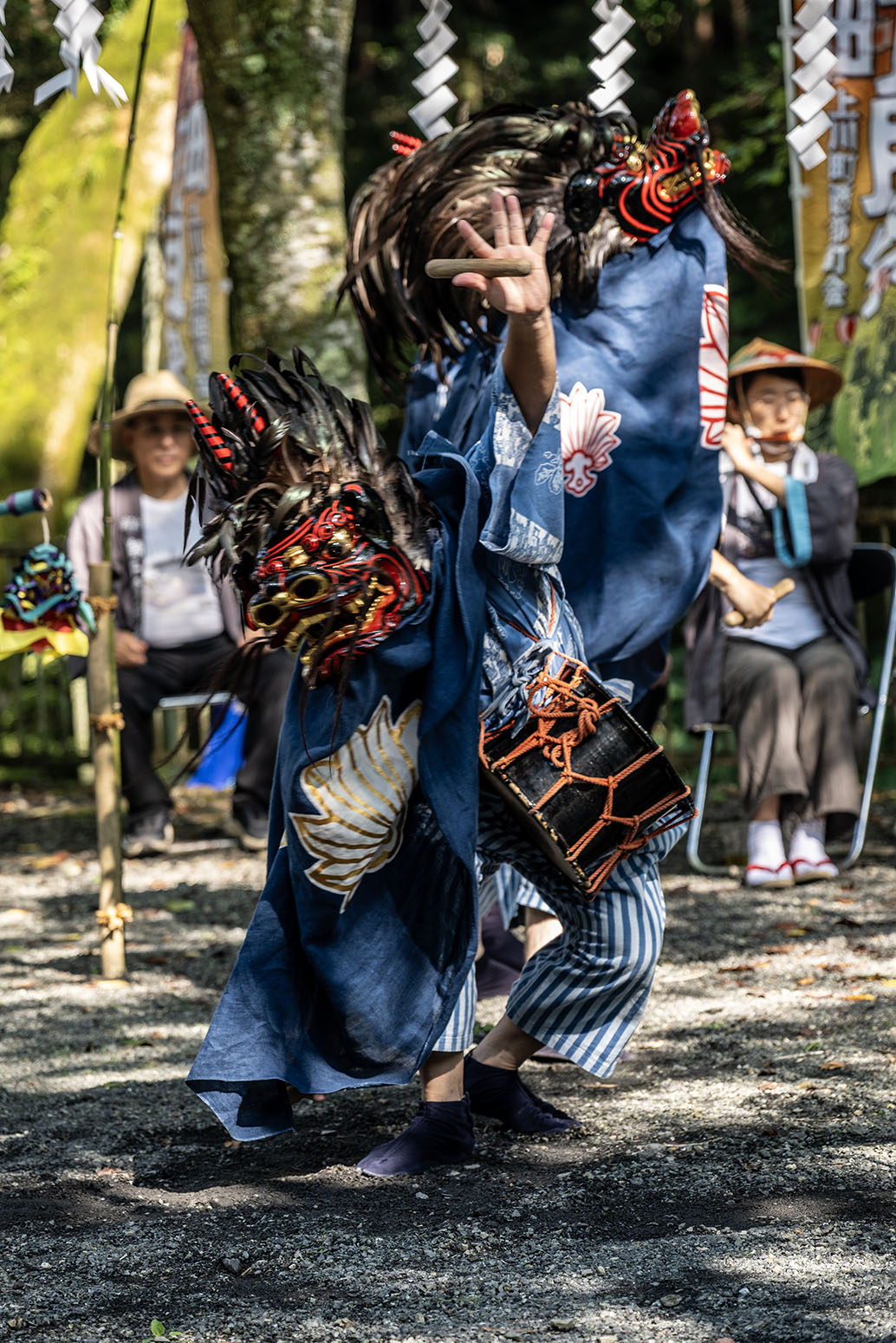

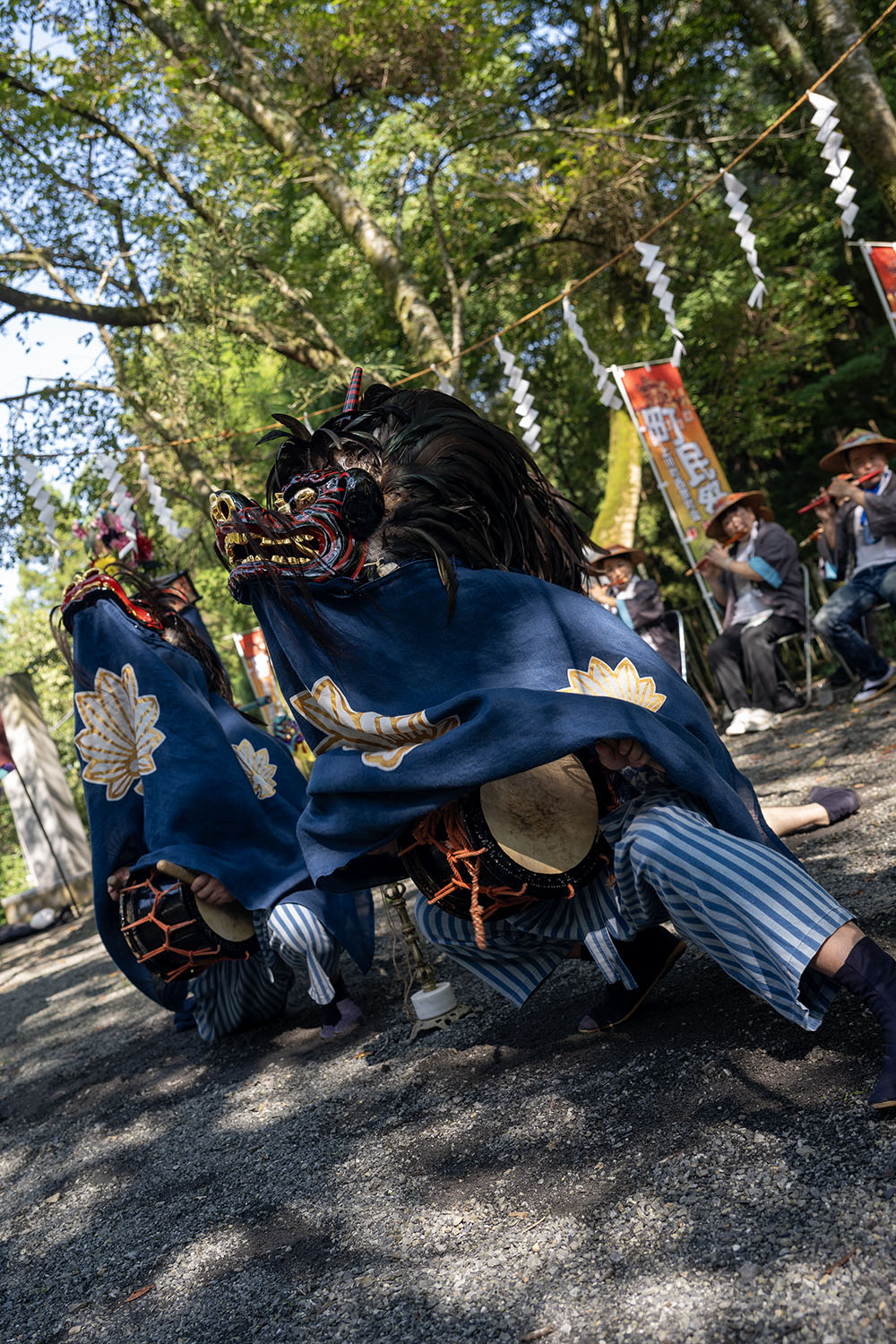

The Shimai-niwa (Final Act) is performed only by the most experienced dancers, and it is a physically demanding performance that can last up to an hour, testing the dancers' endurance. After long, continuous movements such as “Shibakuguri” (Cypress Tree Crawl) and “mejishi-kakushi” (The Vanishing of the Female Lion), where the female lion mysteriously disappears as if taken by a spirit, the act culminates in a fierce battle between the lions. This act represents the pinnacle of the Imakuma Lion Dance, offering a powerful conclusion to the performance.
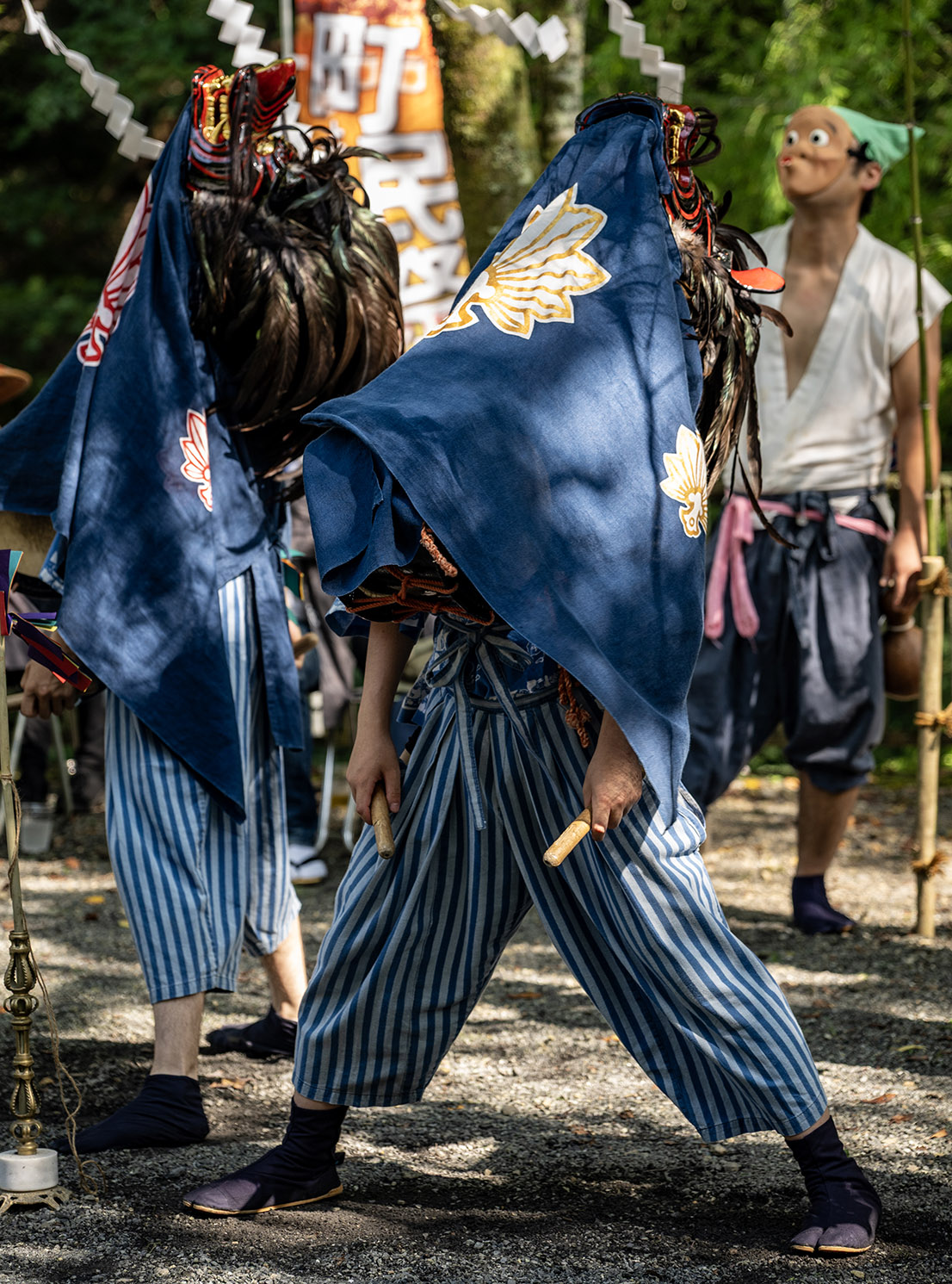



The Lion Dance is not complete with just the lion.
The Hanagasa creates the performance space, and it is only with the song and flute that the Lion Dance comes together as a whole.
Six women perform the Hanagasa role, each representing the sun, the moon, and flowers. They face each other in pairs, with three women positioned to the east and three to the west, forming the stage. Each dancer holds a bamboo instrument called a “Sasara”, and they play light, rhythmic sounds in time with the lion's drum.
The Hanagasa also has an important role in the Shimai-niwa (Final Act), where they help conceal the female lion. During the “Mejishi kakushi” (The Vanishing of the Female Lion) section, the six women gather at the center of the stage to cover and hide the female lion.
It is physically impossible for the same six women to perform throughout all three acts, so they take turns. However, it has become increasingly difficult to gather a full team of twelve, and currently, there are challenges with overexerting the dancers.
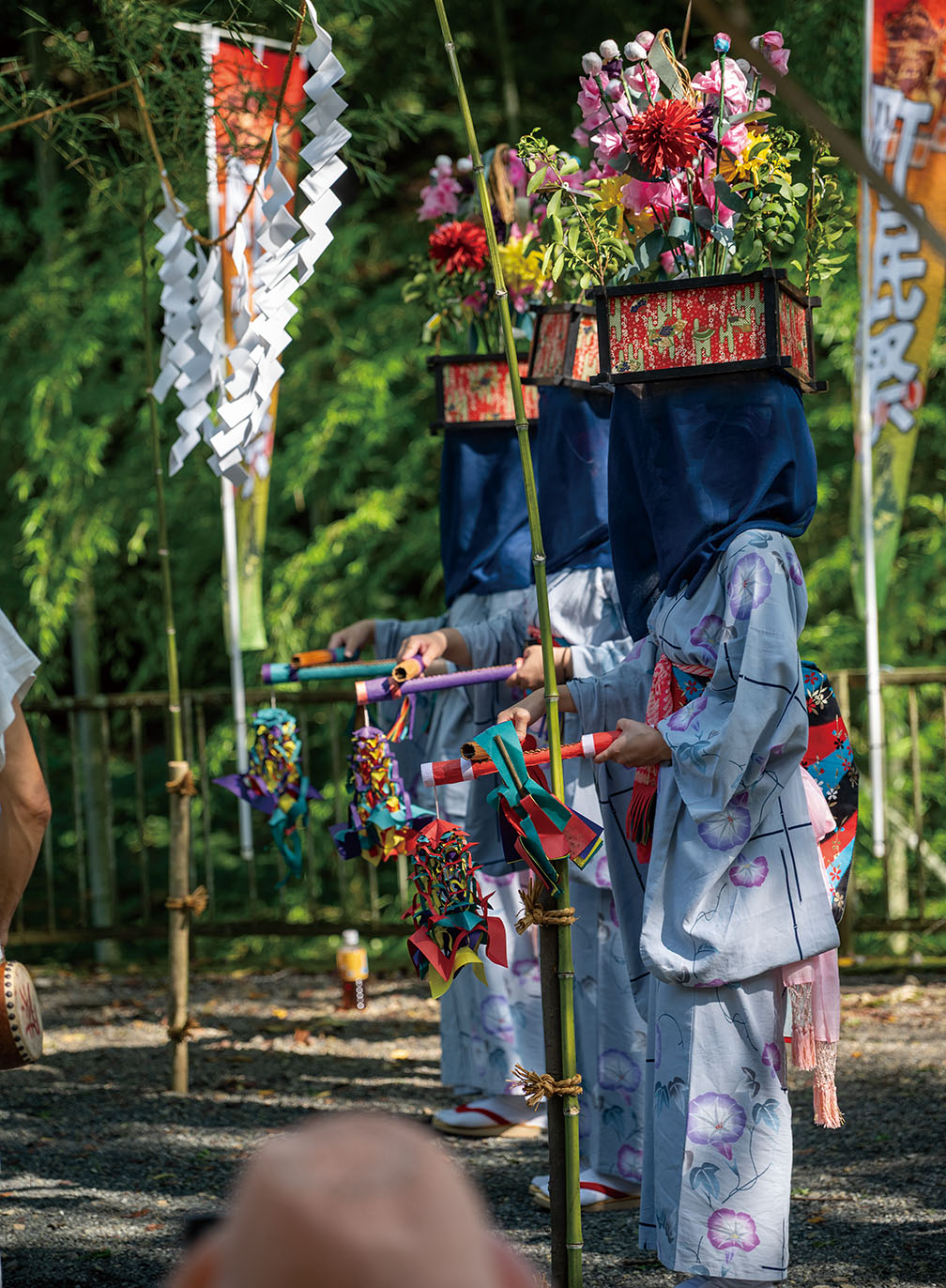

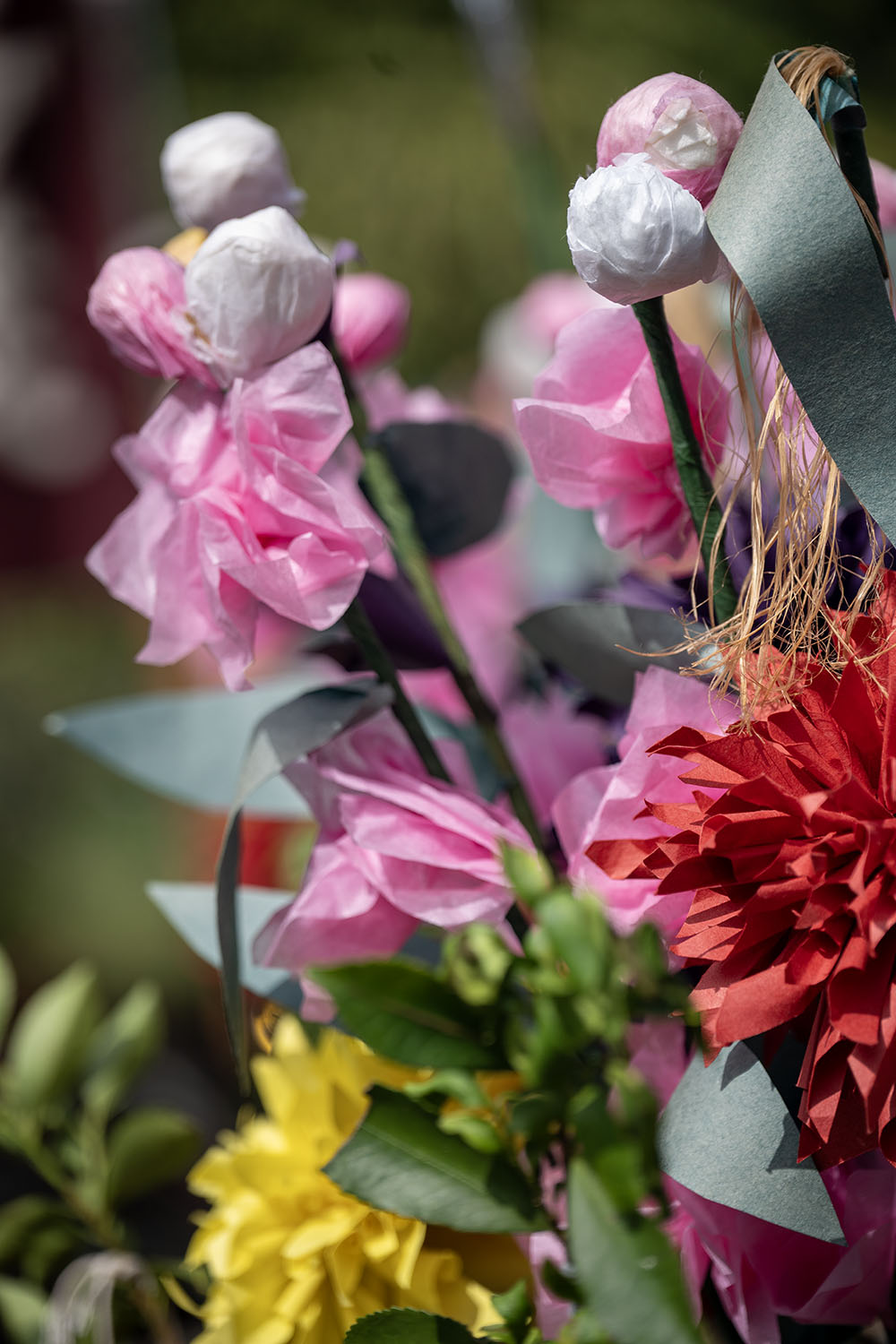

The lion listens to the sound of the flute, while the flutist watches the lion's movements. Together, they synchronize their actions as the performance progresses. The flute used is “Shinobue” (Japanese bamboo flute), and most of the shinobue are handcrafted by skilled shinobue makers living within the local community.
Singing is included in all three acts. The song has an important role in waking the lion from its nap during the performance.
The “Heisoku” (clown role) serves as both the guide and the fool. Wearing a hyottoko mask, the performer sometimes acts in a playful manner, interacting with the audience. In fact, this is one of the most challenging roles, requiring significant experience and skill.
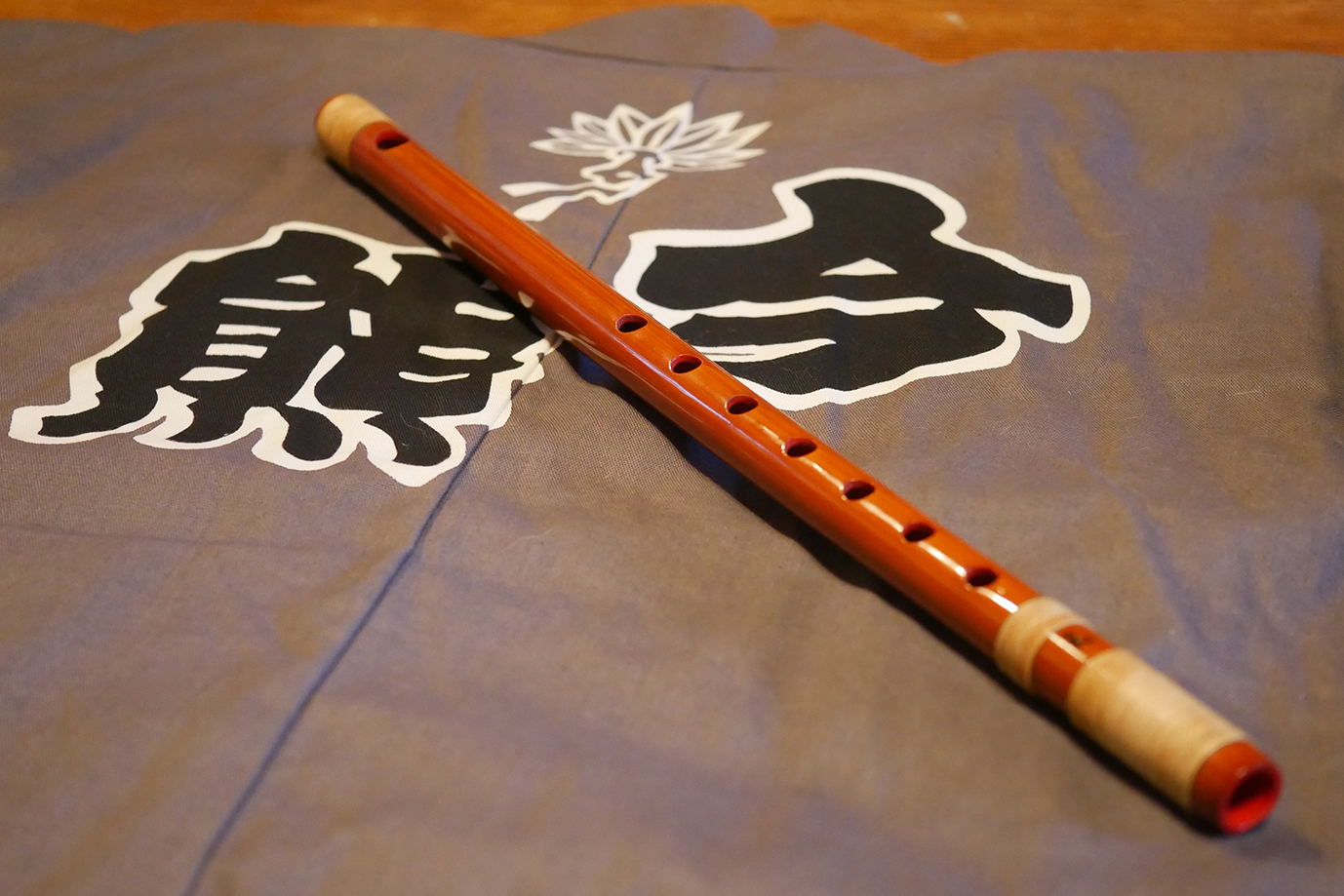

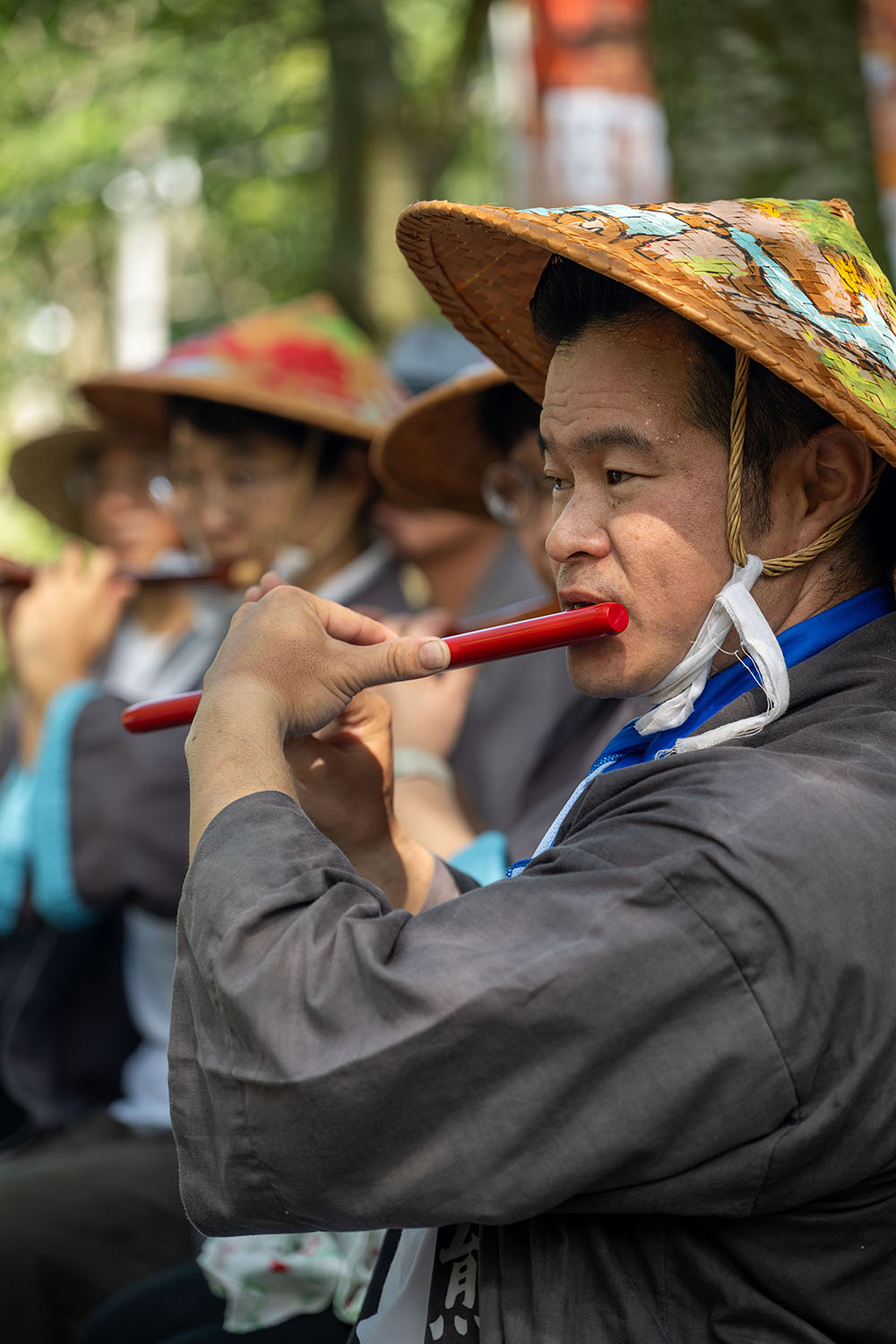



Here, we present photographs from past performances and rehearsal scenes of the Imakuma Shrine Lion Dance. These are precious records capturing the moments of the annual summer offering and interactions with the local community. We hope you can feel the beauty and vitality of this tradition through these images.

We present a video showcasing the 2024 offering performance. The three dancers in the Naka-niwa (Middle Act) are middle school students who had just started their practice one month prior. This was their first offering. It was a very hot day, but both the dancers and the Hanagasa performers did their best.
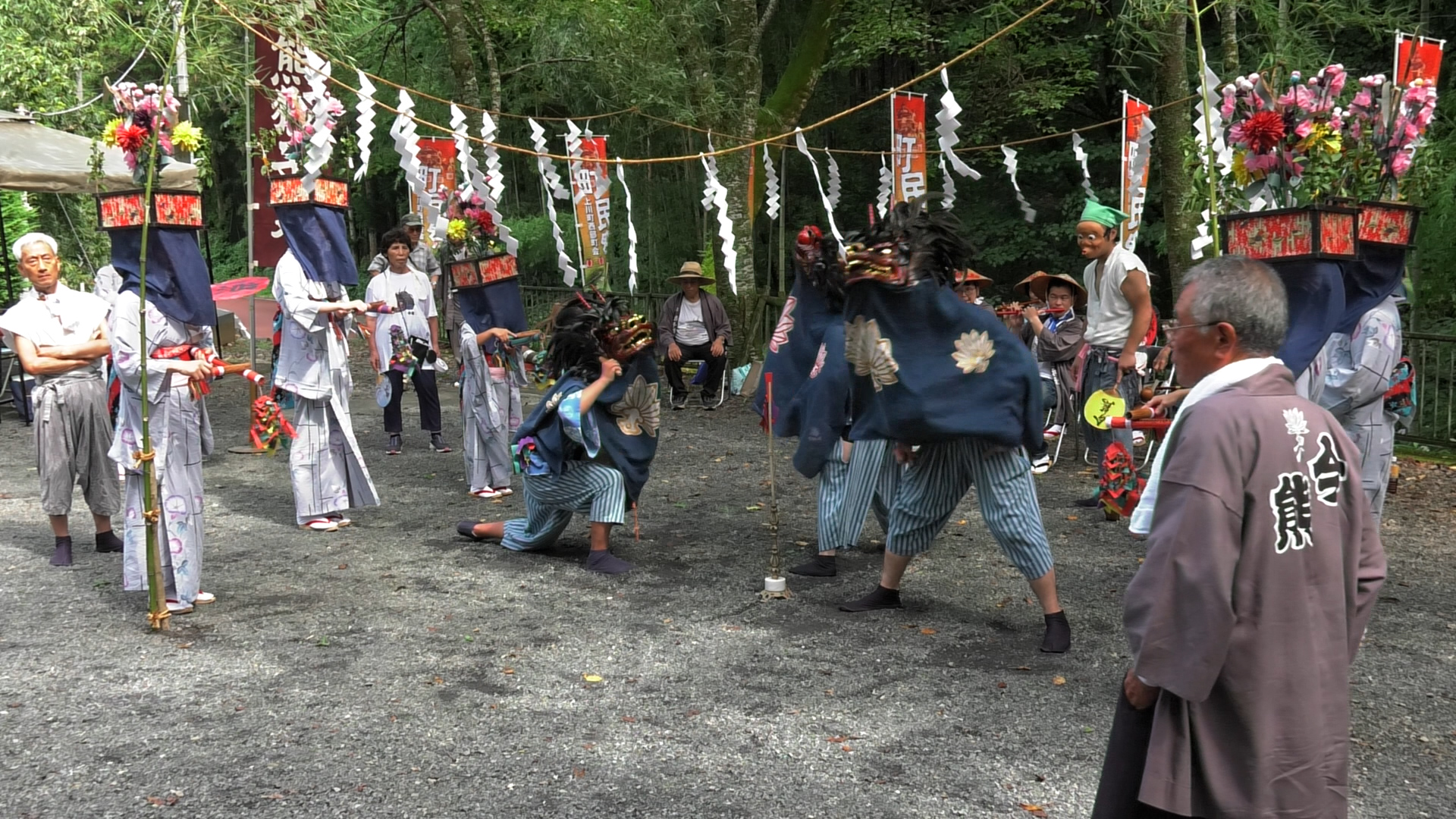
Shote-niwa
“Heisokutori”
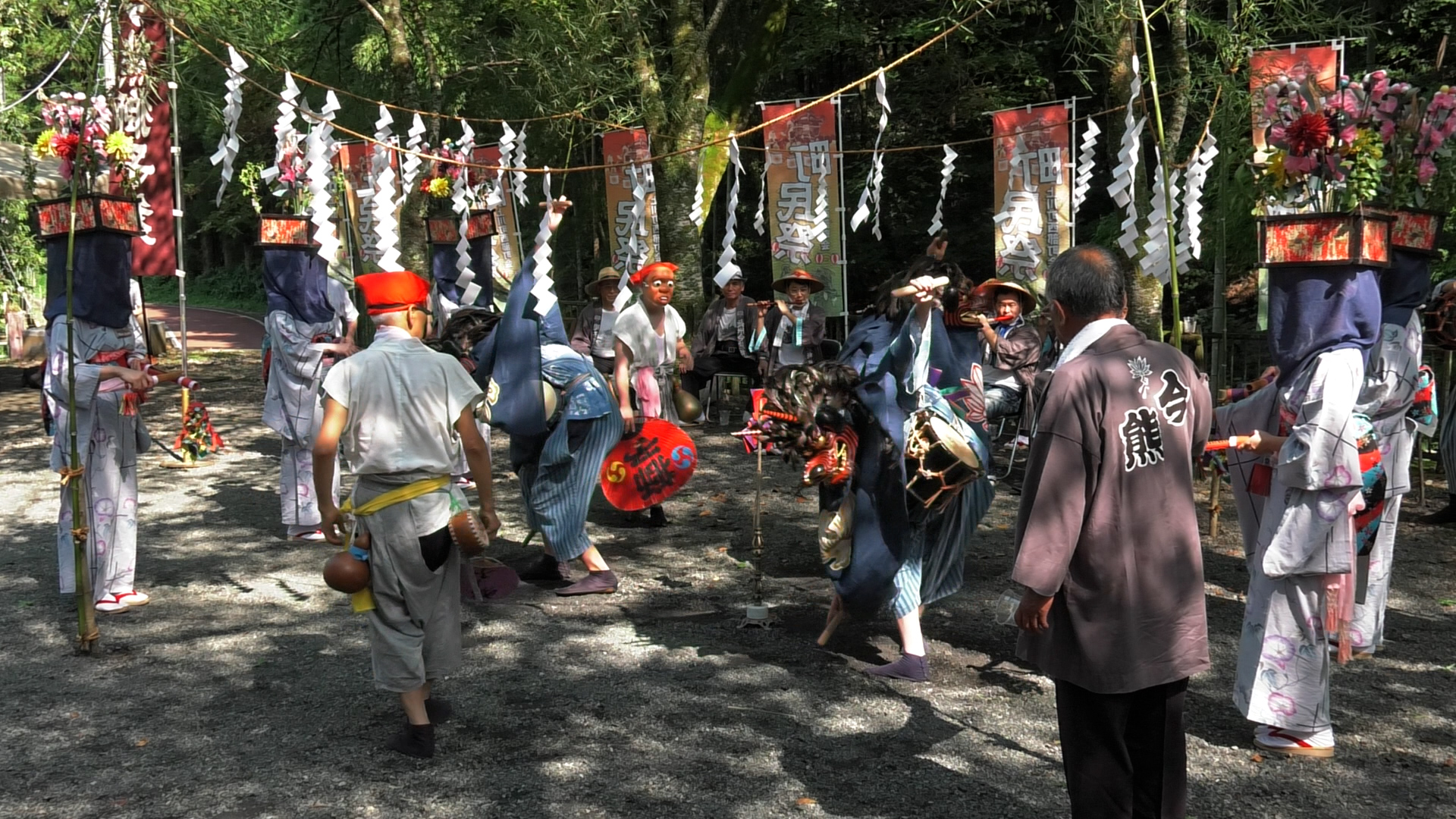
Naka-niwa
“Futatsu-kaeri”
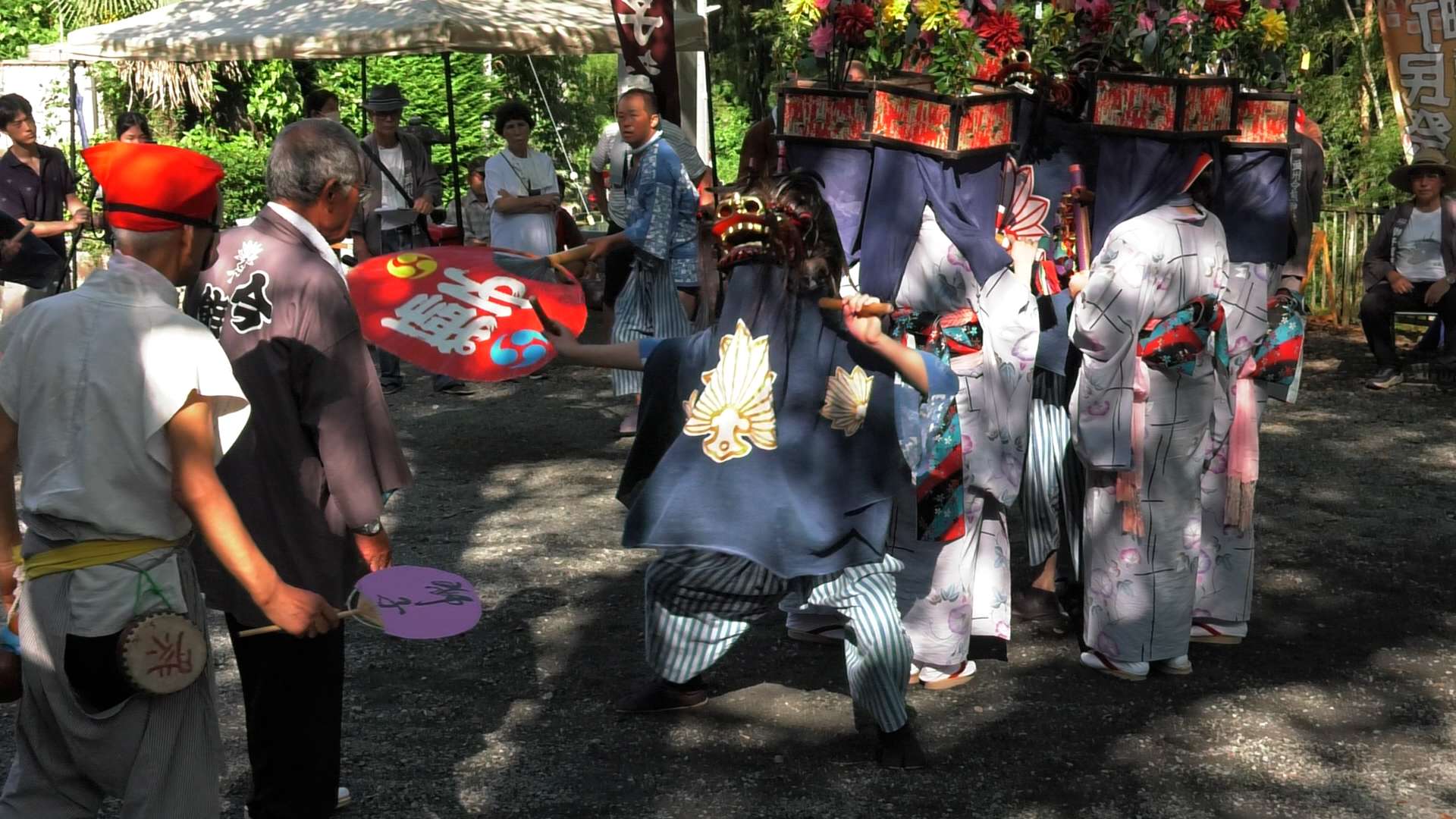
Shimai-niwa
“Shiba-kuguri”“Mejishi-kakushi”


The Imakuma Shrine Lion Dance Preservation Society is seeking new members. If you are interested in the Lion Dance or wish to pass on traditional arts to future generations, we invite you to join us in our activities. Beginners are welcome, and we provide thorough guidance, so please feel free to contact us.
The tradition of the Lion Dance has long been upheld by the local community. However, due to the aging population and outflow of residents, the number of people able to take on the Lion Dance role has been decreasing. Since our area is designated as an urbanization control zone, we do not expect a large influx of new residents, and we anticipate difficulties in continuing the tradition. Therefore, we are now broadly recruiting people who are interested in helping preserve and pass on the Lion Dance. We are looking for performers, hanagasa dancers, flute players, singers, stagehands, and more. There are opportunities for everyone from upper elementary school students to adults. There are no fees for membership, equipment, or costumes.

↑↑ Click ↑↑
Practice sessions are held regularly—bamboo flute (shinobue) training takes place once a month, and lion dance rehearsals are held more intensively before performances. We are also working toward making lion dance training a monthly activity. Everyone is welcome—adults and children alike, regardless of gender—and families are encouraged to join together. Even complete beginners can feel at ease, as we provide kind and careful instruction starting from the basics. Online learning materials are also in preparation. This is a rare opportunity to build strength while learning a centuries-old tradition. We warmly invite you to be a part of preserving this precious cultural heritage.
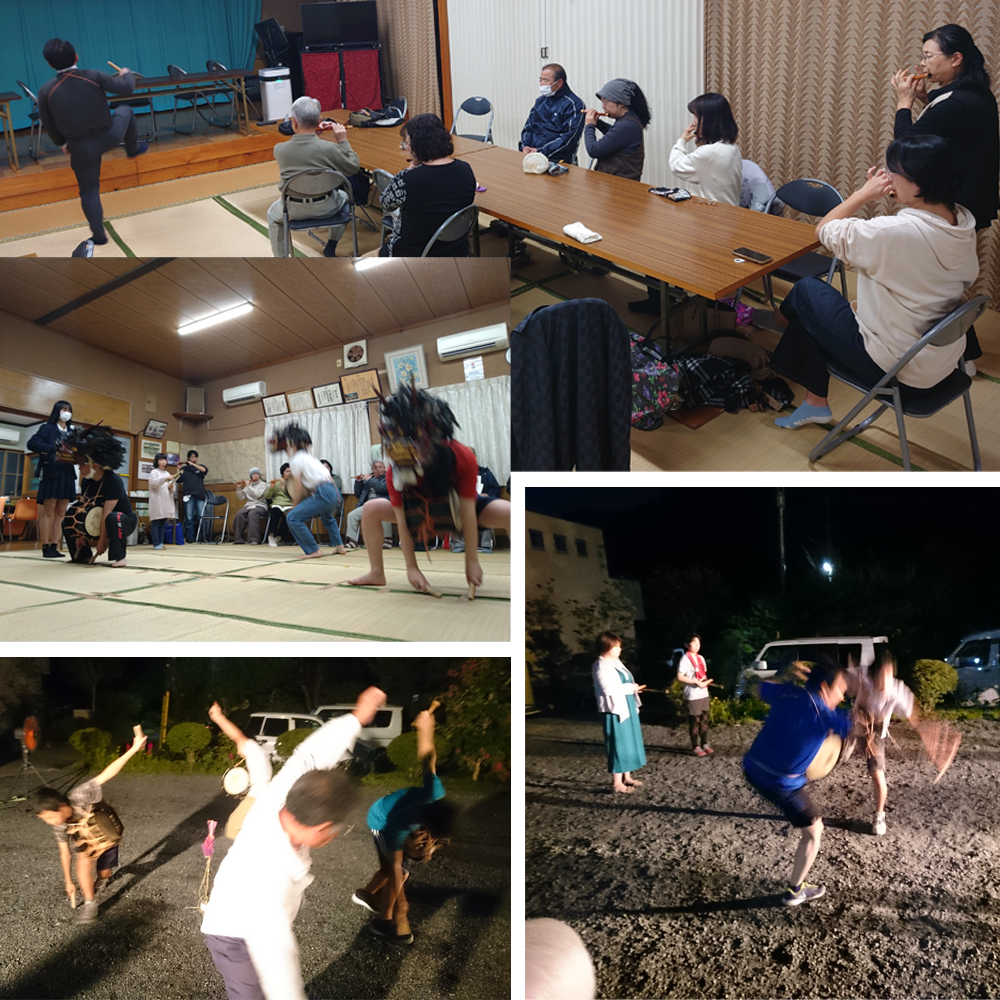


Access to Imakuma Shrine
33 Kamikawa-machi, Hachioji-shi, Tokyo 192-0151
Take the Nishitokyo bus [Aki04] route.
Approximately 15 minutes on foot from the Imakuma-san Tozanguchi bus stop.
Limited parking is available.
Imakuma Shrine is located at the foot of Mt. Imakuma,
a popular starting point for light mountain hikes and trekking.
In spring, the mountainside comes alive with vibrant clusters of mitsuba tsutsuji (three-leaf azaleas) in full bloom.
At the summit stands the shrine’s main sanctuary, offering scenic trails that lead to Kongo Falls, Komine Green Zone, and Mt. Kariyose.
Throughout the year, the area attracts visitors for hiking, nature walks, and trail running.
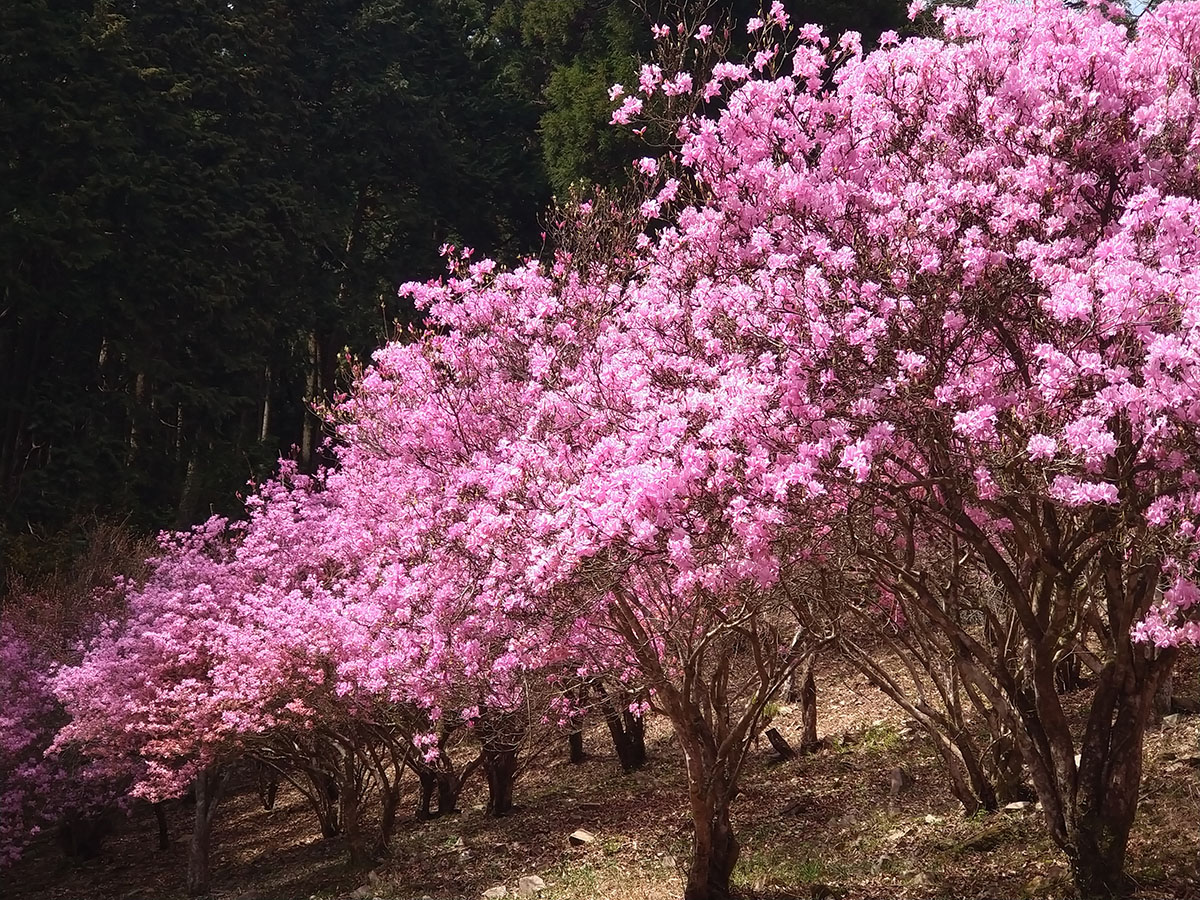
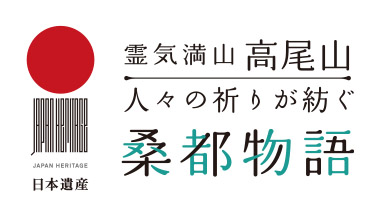
There is a vivid and purposeful story behind the Lion Dance of Imakuma.
Three lions come to play in an open field.
First, one of the male lions looks around carefully to make sure the area is safe.
Then, right in the center of the field, he discovers something strange.
“What could that be...?” he wonders, cautiously approaching.
He sniffs and growls a little, trying to figure out what it is.
After taking a closer look, he realizes—it’s a heisoku, a sacred paper wand used to represent a god.
What a lucky find! The lions are overjoyed.
They play happily, one of them holding the heisoku in its mouth.
Before long, the lions grow tired from all the fun and settle down for a cozy nap.
Then, from somewhere far off, a gentle song begins to drift through the air.
Hearing the melody, the lions slowly wake up and stretch.
Feeling refreshed, they begin to play again with renewed energy.
But wait—something's wrong.
One of the lions, the female, is missing!
The two male lions look around in panic and begin to search for her.
They search and search... and finally, they find her.
But now a new problem begins—the two male lions start to fight over her!
They bump and clash, growling and tumbling fiercely.
After many rounds of winning and losing, the two finally stop fighting.
They make up, shake paws, and all three lions are together again.
And so, the story ends in harmony—with everyone smiling once more.